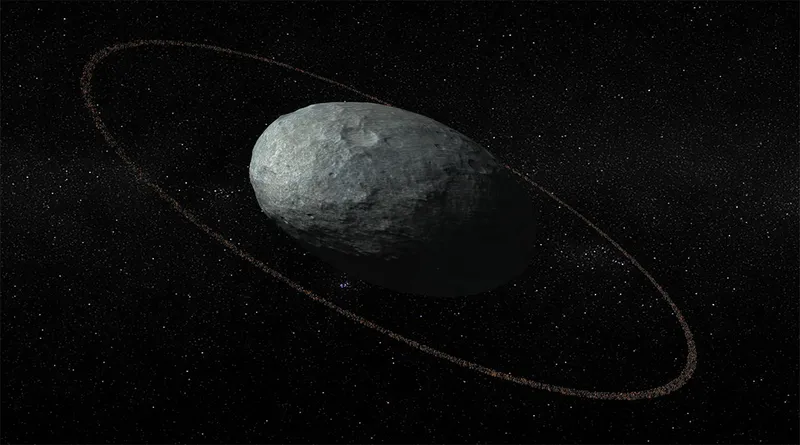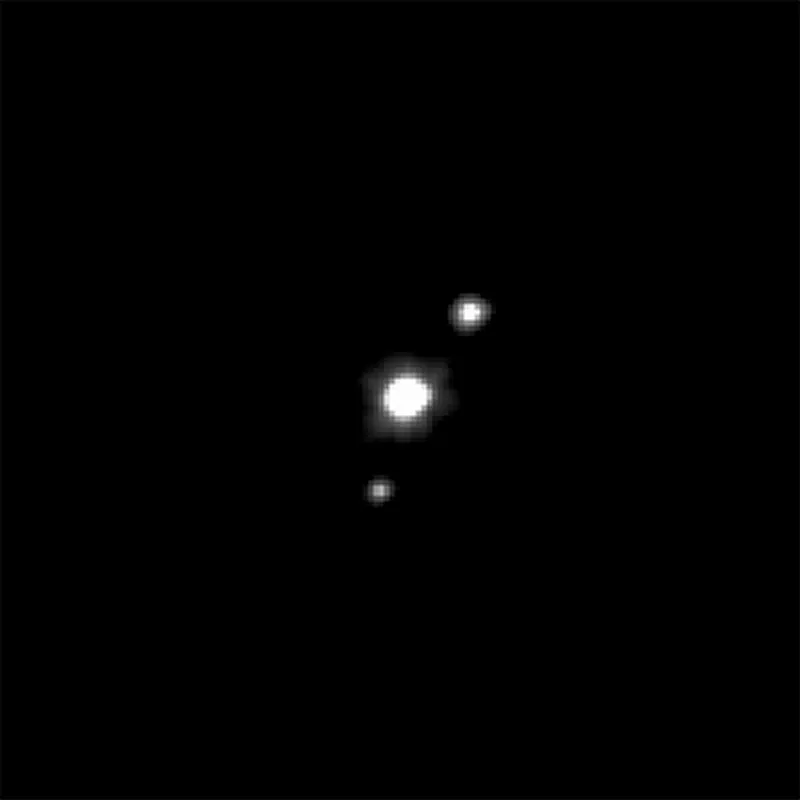Dwarf planet Haumea – which lies in the distant Kuiper Belt and takes its name from a Hawaiian fertility goddess – wasn’t discovered until 2005.
But Haumea has a number of distinctive features that make it one of our Solar System’s most intriguing objects.
Let's take a look at some of the most fascinating facts about this weird and wonderful dwarf planet.
Shape
Perhaps the most obvious of these is that, unlike most of the big chunks of rock floating in space, dwarf planet Haumea is not round.
Instead, Haumea is a triaxial ellipsoid, which in plain English means it’s shaped something like a rugby ball or American football.
This unusual morphology is a result of its high rotational velocity.

Rotation
One of the fastest-spinning objects in the Solar System, dwarf planet Haumea rotates on its axis in less than four hours.
This means that a day on Haumea lasts about four hours.
Were it to spin any faster, say NASA scientists, Haumea would eventually erode away into a dumbbell shape, and then break in two.
Size
Haumea is also tiny: its average radius is just 780km, compared to Pluto’s 1,188km or Earth’s 6,371km, and its mass is just 1/1,400th that of Earth.
But Haumea hasn’t let that hold it back, spawning a ring system as well as two moons, Namaka and Hi’iaka.
It is, in fact, the only Kuiper Belt object known to have rings or satellites.

Surface and atmosphere
As it is too far away to be imaged directly by telescopes, we don’t know a huge amount about Haumea’s surface or atmosphere.
But it is believed to be covered in water ice, with an average surface temperature of –240°C.
Dwarf planet categorisation
In 2008, Haumea was officially designated as a dwarf planet, making it one of just five such objects in our Solar System.
The others are Pluto, Ceres, Makemake and Eris, although at least five other strong candidates for dwarf planet status are known to exist.
This recognition followed a minor controversy over Haumea’s discovery, with a team at the Palomar Observatory, led by Caltech’s Mike Brown, announcing in 2005 that they’d spotted it in data from 2024.
Only for a team at Spain’s Sierra Nevada Observatory to declare a week later that they’d found it in THEIR data from 2003.
Since then, evidence of Haumea’s existence has been ‘precovered’ in images and data from as long ago as 1955.
